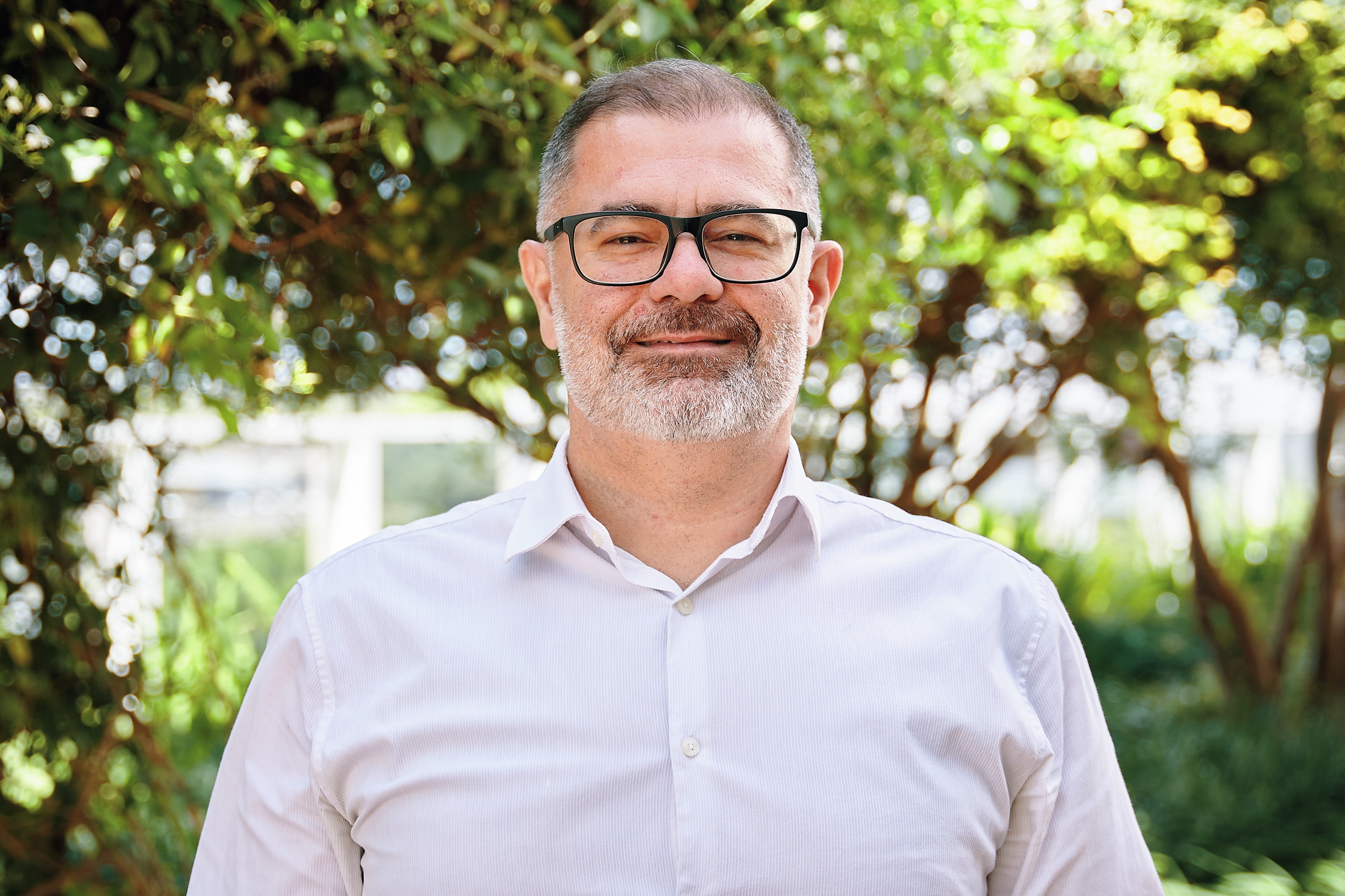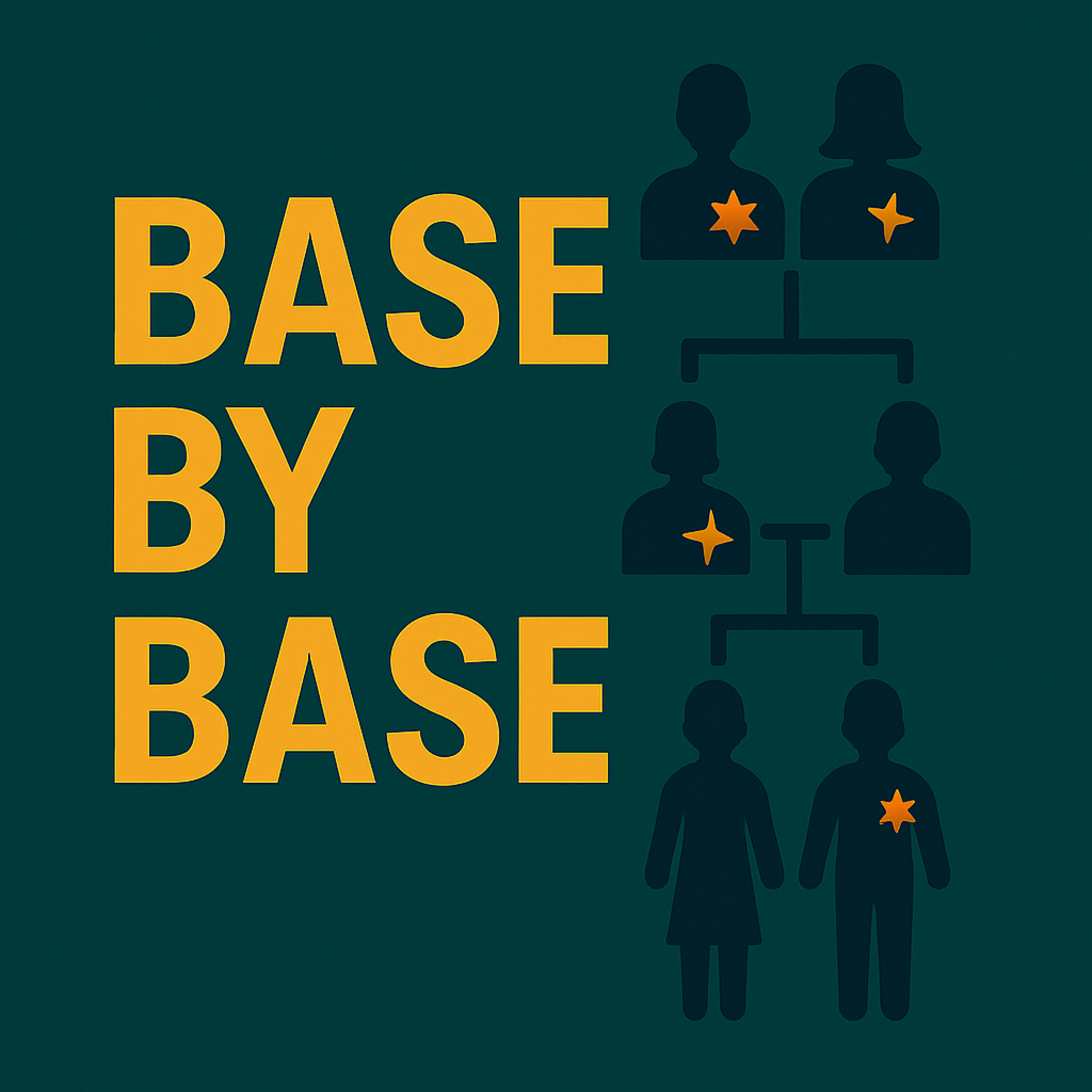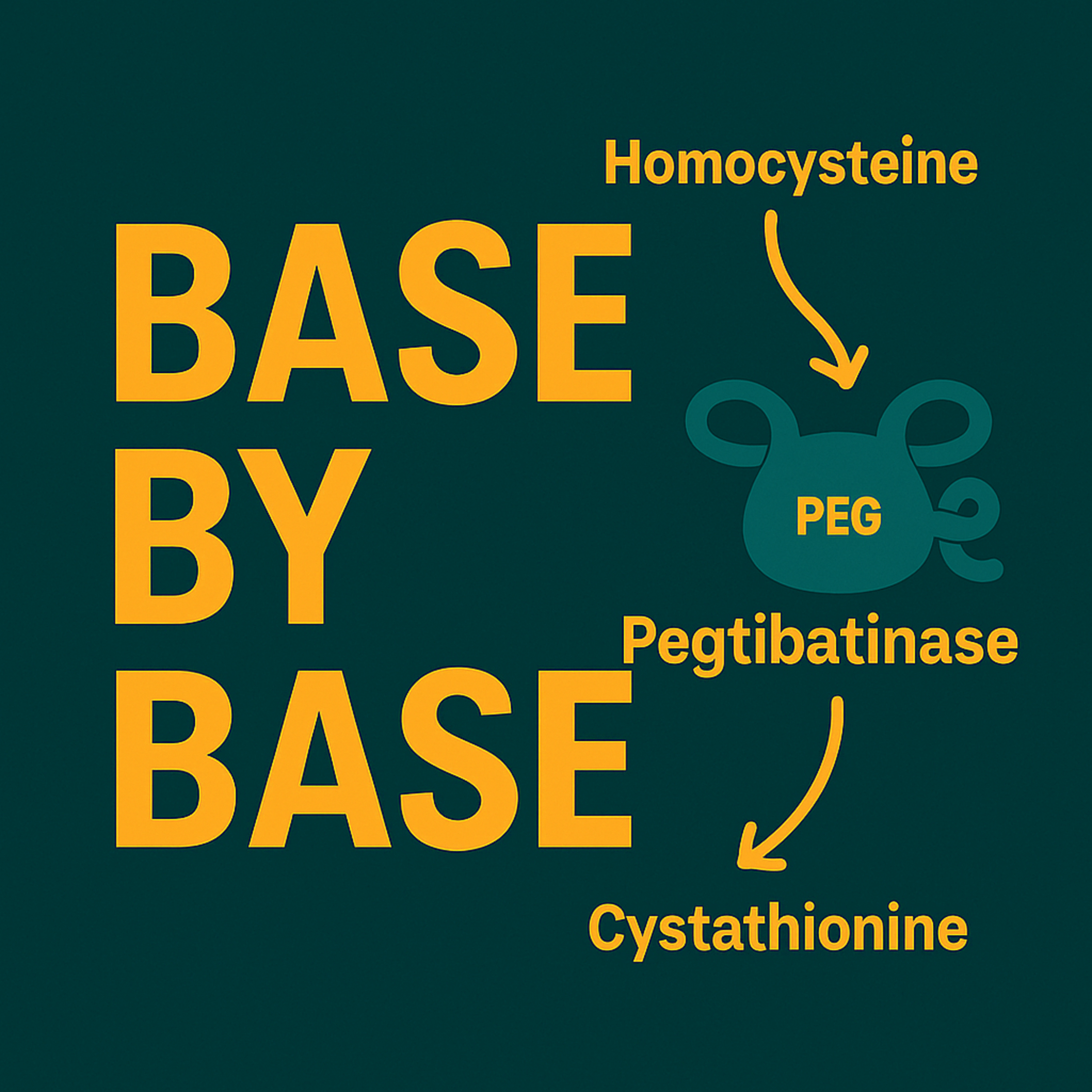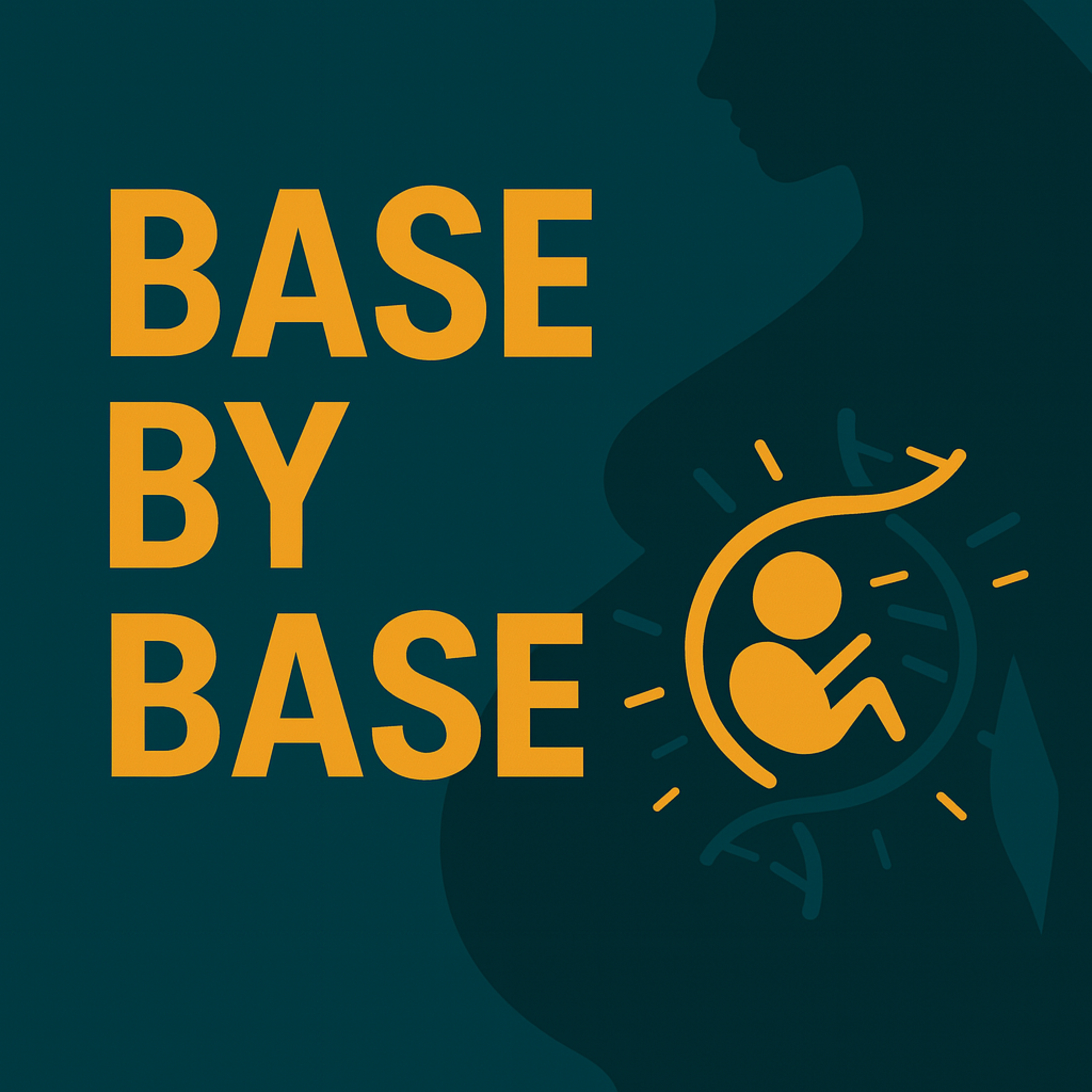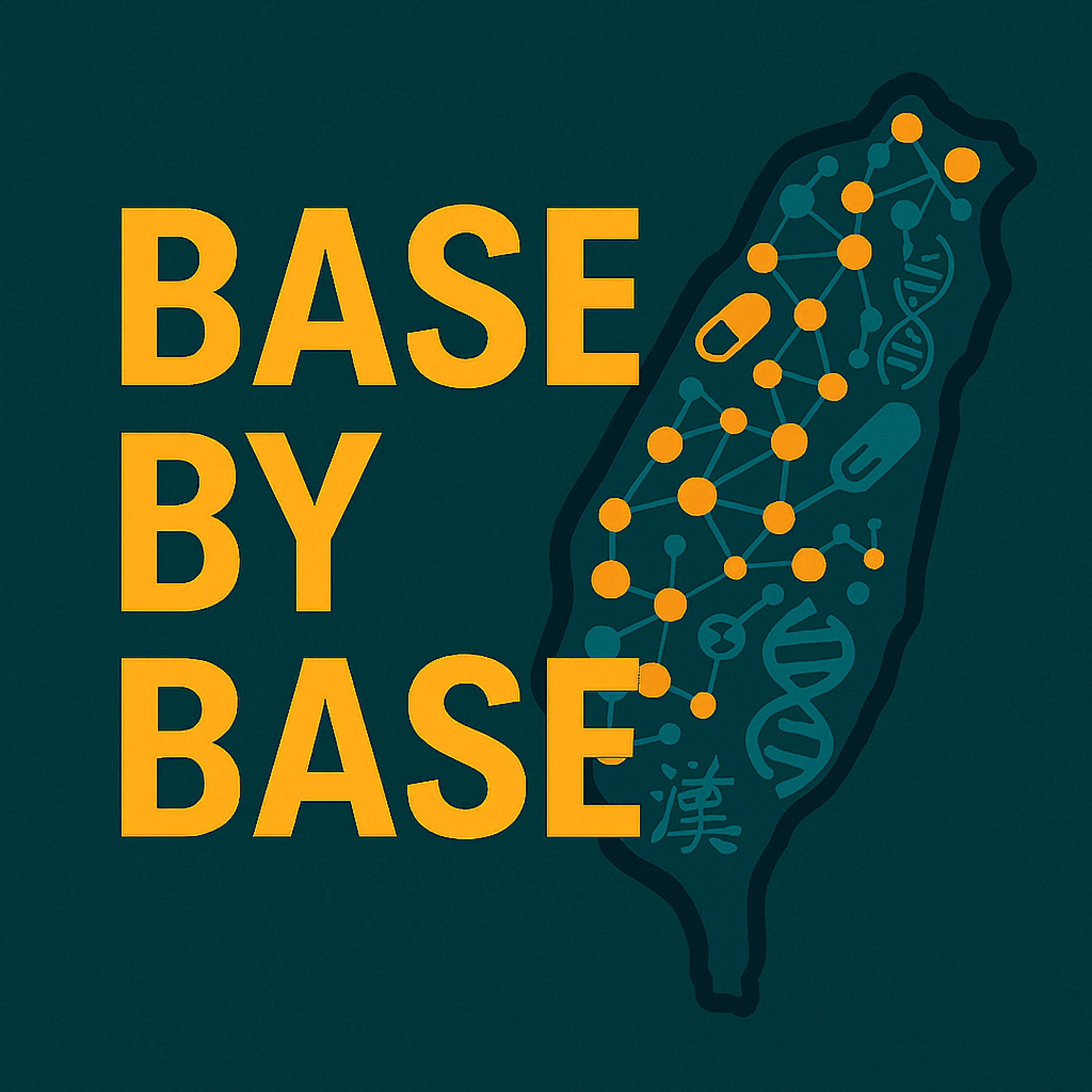Show Notes
️ Episode 13: Decoding De Novo: A Multigenerational Benchmark for Human Mutation Rates
In this episode of Base by Base, we explore a monumental study published in Nature that redefines how we understand human de novo mutation (DNM) rates. By sequencing 28 individuals across four generations from the CEPH 1463 family with five complementary technologies, this study delivers the most complete pedigree reference to date.
Led by Porubsky and colleagues, the research team used a mix of short- and long-read sequencing to phase and assemble more than 95% of each diploid human genome, enabling unprecedented insight into de novo mutations—spanning single-nucleotide variants (SNVs), indels, tandem repeats, structural variants, and centromeric changes.
Key insights include:
98–206 DNMs per transmission were observed, with a strong paternal bias (75–81%), particularly for SNVs and structural events.
16% of SNVs are postzygotic, with no paternal bias, and can still be transmitted, highlighting early embryonic mosaicism.
Tandem repeats (TRs) were highly mutable, with an average of 65.3 de novo TR events per genome, accounting for more mutated base pairs than SNVs.
Large centromeric SVs were uncovered in ~7% of assembled centromeres, with some events causing functional shifts in the kinetochore-associated hypomethylation zone (CDR).
Y chromosome mutations were enriched in heterochromatic satellite DNA, with a de novo mutation rate up to 30x higher than autosomal euchromatin, often driven by interlocus gene conversion.
Sequence-resolved recombination maps enabled the identification of 1,503 meiotic breakpoints, showing recombination patterns influenced by sex and parental age.
Nearly all variation types were cross-validated using multiple sequencing platforms, positioning this dataset as a gold standard for benchmarking new mutation discovery tools.
This study is a landmark in human genomics, offering a comprehensive “truth set” for future mutation rate models, algorithm development, and clinical benchmarking—bringing us closer to decoding the full complexity of inherited and spontaneous variation in the human genome.
Reference:
Porubsky, D., Dashnow, H., Sasani, T.A., et al. (2025). Human de novo mutation rates from a four-generation pedigree reference. Nature. https://doi.org/10.1038/s41586-025-08922-2
License:
This episode is based on an open access article published under the Creative Commons Attribution 4.0 International License (CC BY 4.0) – https://creativecommons.org/licenses/by/4.0/
